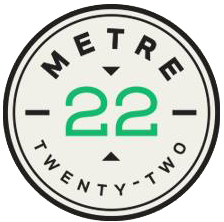
In one of our previous blog posts, ⟨”What Theo & the Cubs Teach Us About Corporate Culture”⟩, we shared some thoughts on the importance of screening candidates for character-culture fit in the recruiting and talent selection process. As promised, here is on example of how an organization put culture-fit screening into practice.
PPR Talent Management is a national healthcare staffing company. They are widely known in the industry for their unique and positive culture. In fact, PPR has been recognized for 13 years in a row as one of America’s Top Places to Work. We spoke with Ashley Tonkinson, PPR’s head of Human Resources — or as her official title reads, Director of Great Employment Experiences — about the company’s approach. Here are a few characteristics of their process.
1. PPR’s approach is grounded in the philosophy behind Topgrading – an approach originally pioneered by Dr. Brad Smart. Within that approach, PPR adopts a guiding philosophy that it is easier to train technical skills than character skills, which increases the focus on culture-character fit.
2. The interview process is focused on “deep dive conversations” that aim to uncover how the candidate has lived the company’s core values in their past lives. For instance, Tonkinson explains “we might ask candidates to share their philosophy on customer service and describe how they have put that philosophy to work in past roles. This can tell us a lot about how well the candidate will fit in our own unique customer service culture.”
3. As PPR gets to know candidates, the interviewing leaders spend a lot of time exploring the prospects’ history with a focus on transitions. “How people handle significant transitions in their life tells us a lot about people’s values, how they make choices, and the make-up of their character.”
4. During the interview process, PPR invites perspective employees to ‘shadow’ a team member to expose candidates to the real-world work environment they are signing up for. Even if for only 30 minutes or an hour, shadowing tells the potential employer and employee volumes about whether or not this may be a long-term match.
5. The company also uses a group approach, with typically at least three leaders sitting in a panel format for key discussions with the candidate. This allows PPR to make group decisions on fit.
In addition to these characteristics, we were struck by how deeply the hiring process focused on assessing a candidate’s level of humility, authenticity, and personal accountability – all hallmarks of the PPR culture and traits that can only be assessed through meaningful conversations.
The repeat-ability of the process also shone through. “For each candidate we strive to keep the process consistent. We want the process to be equitable and positive,” added Tonkinson.
So does the process yield measurable business results? For PPR, the answer is an unequivocal yes. PPR has seen tremendous growth in their business. They have turnover rates under 10% and have been recognized nationally as one of the best places to work year-in and year-out. It doesn’t get much better than that.
Feel free to leave us a comment or let us know how your company ensures a great cultural fit for potential hires. We would love to hear more best practices.
